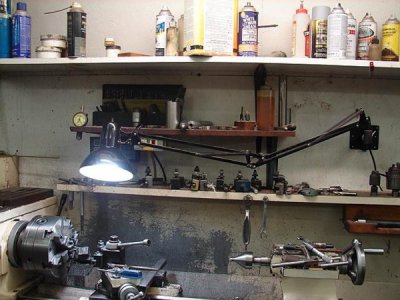- Joined
- Oct 31, 2016
- Messages
- 2,720
Mounting the light on the front left corner of the bench seems to be working. Last week I finished making a spacer for the spindle on a trailer I have. Today I went to mount the hub and discovered the race for the grease seal needed some clean up. Chucked the hub up in the lathe and had it fixed in no time. The light worked good. Only negative so far is the heat from the old style bulb. Will replace it with a LED.
And I do have a small LED flashlight that I use to see inside of bores.
And I do have a small LED flashlight that I use to see inside of bores.


